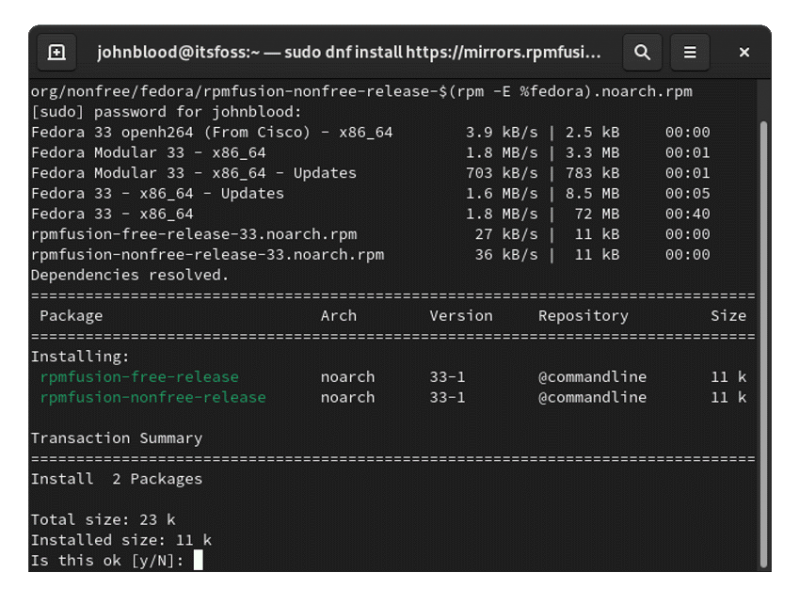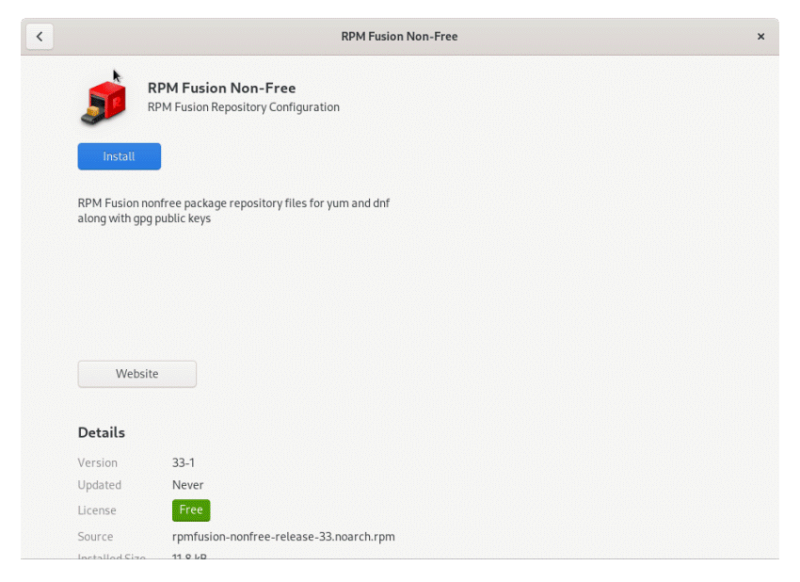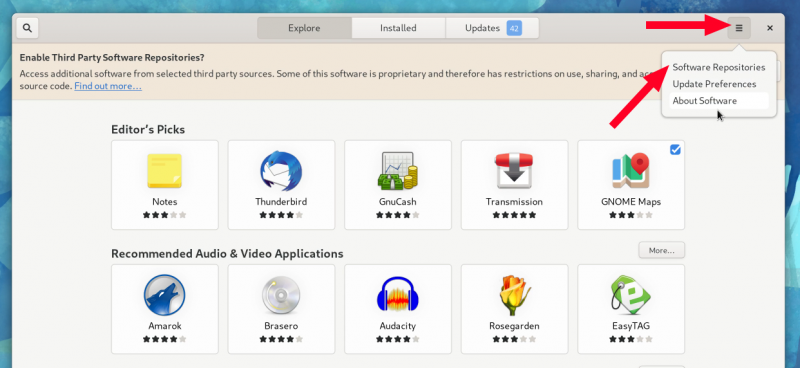
After you install Fedora, you may discover that some of the popular Linux software that you want to install are not available in the software store.
This is because Fedora enforces the following guidelines when it comes to packages:
- If it is proprietary, it cannot be included in Fedora
- If it is legally encumbered, it cannot be included in Fedora
- If it violates United States laws (specifically, Federal or applicable state laws), it cannot be included in Fedora
Don’t lose hope. You can make the additional applications available by adding third party repos for Fedora.
Third party repositories in Fedora
There are two main third-party repositories in Fedora:
- Fedora’s own third party repositories: Fedora provides an easy way of enabling a third-party repository and accessing a few popular software like Chrome, Steam, Nvidia drivers.
- RPM Fusion repositories: This third-party repository gives you access to a huge number of Linux applications that are not provided from Fedora’s own repositories.
Let’s see how to enable these third party repositories in Fedora.
Part 1: Enabling RPM Fusion Repositories in Fedora
RPM Fusion is the main source for third party applications for Fedora. RPM Fusion is the result of three projects (Dribble, Freshrpms, and Livna) merging. RPM Fusion offers two different software repos.
- The free repo contains open-source software.
- The nonfree repo contains software that does not have an open-source license, but the source code is freely available.
There are two ways to enable RPM Fusion: from the terminal or by clicking a couple of buttons. We’ll take a look at each.
Method 1: Command line method
This is the easiest method to enable the RPM Fusion repos.
Just enter the following command to enable the RPM Fusion repository for open source software:
sudo dnf install https://mirrors.rpmfusion.org/free/fedora/rpmfusion-free-release-$(rpm -E %fedora).noarch.rpm For non-free (i.e. not open source) software, add this repository.
sudo dnf install https://mirrors.rpmfusion.org/nonfree/fedora/rpmfusion-nonfree-release-$(rpm -E %fedora).noarch.rpmYou will be asked to enter your password. You will then be asked to verify that you want to install these repos. Once you approve it, the installation will be completed in a few seconds or minutes.

Optionally, you may also use the command below to show the packages from RPM Fusion repository in the GNOME Software Center.
sudo dnf groupupdate coreMethod 2: Graphical method
To enable the RPM Fusion repos using this method, you need to visit the RPM Fusion Website. You will see links for both repos for different Fedora versions.

RPM Fusion recommends installing the free repo first. So, click the link for the free repo for your version of Fedora.
This will download the RPM file for the repo. Installing RPM file is really easy. Just double-click on it and it will be opened in the Software Center application. Now, just hit the Install button.

Once the installation is completed, go back and install the nonfree repo using the same steps.
To get the RPM Fusion packages in the software center, you’ll have to add the appstream metadata using the terminal:
sudo dnf groupupdate corePart 2: Enable Fedora’s Third Party repositories
Fedora recently started offering its own repo of third party apps. The number of applications available in this repo is very small. You can install Chrome browser on Fedora with it. Apart from Chrome, it also includes tools like Adobe Brackets, Atom, Steam, Vivaldi, Opera, and more.
Just like RPM Fusion, you can enable this repo via the terminal or graphically.
Method 1: Command line method
To enable Fedora’s third-party repo, enter the following command into your terminal:
sudo dnf install fedora-workstation-repositoriesBe sure to ensure your password when prompted and type Y to approve the installation.
Method 2: Graphical method
If you are not comfortable using the terminal, you can use the graphical method.
First, you need to open Gnome Software. Next, you need to click on the hamburger menu in the top right corner and select “Software Repositories” from the menu.

In the Software Repositories window, you will see a section at the top that says “Third Party Repositories”. Click the Install button. Enter your password when you are prompted and you are done.

You can see some additional software sources now like Google Chrome, Nvidia etc. To install those applications, you have to enable these ‘sub repositories’.

With these additional repositories enabled, you can install software to your heart’s content. You can easily install them from the software center or use the DNF package manager.
If you found this article interesting, please take a minute to share it on social media, Hacker News, or Reddit.

